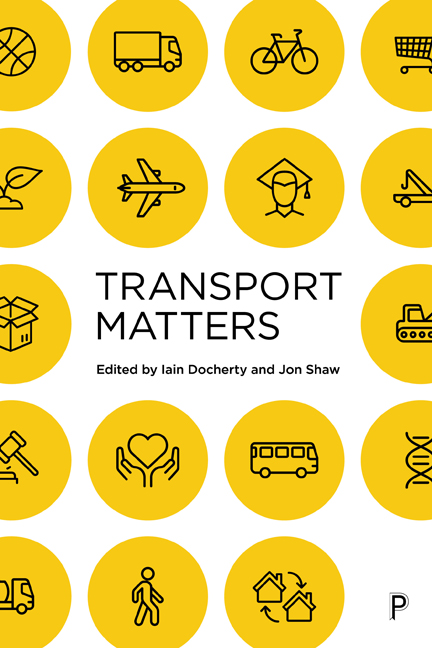4 - Social Inclusion, Accessibility and Emotional Work
Published online by Cambridge University Press: 03 March 2021
Summary
Introduction
This chapter is about issues of inclusion, equality and accessibility in relation to everyday mobility. Along with others (for example, Bhat et al 2000, Curtis 2011, Simoes 2013, Ganning 2014, Martens 2017) we argue that accessibility to transport is essentially an issue of social justice and social mobility; accessibility is crucial for all groups in society to facilitate opportunities in order to accrue social, economic and cultural capital. Yet despite much progress in recent years, there remains a great deal to do in tackling transport-related social exclusion. Indeed, as stated in a Commission for Architecture and the Built Environment (CABE) (2008: 3) report, ‘social, cultural and economic inequalities are still being literally built into new places, and planners and designers need to examine more closely the impact of their decisions.’ There is already a sizeable literature on equality and accessibility (Martens 2017, Martinez et al 2017, Ricci et al 2016), but our argument here is that studies to date have been overly concerned with the ‘objective’ causes of (in)accessibility, such as the proximity of a transport interchange, and the outcomes of (in)accessibility, such as the inability to get a job. Much less attention has been focused on ‘making’, ‘gaining’ or ‘doing’ access – in other words, the experience of actually being mobile, of taking a journey, in the context of how it relates to accessibility more generally. In particular, there is little on what we term the ‘emotional work’ involved in gaining accessibility, and how this is unequally distributed between social groups.
Accessibility can be defined as ‘a measure of the ease of an individual to pursue an activity of a desired type, at a desired location, by a desired mode, and at a desired time’ (Bhat et al 2000, in Ganning 2014: 5). Definitions such as Bhat et al's might imply an emotional component, with its reference to ‘ease’, but important elements of accessibility such as affective, embodied and emotional exertion remain marginalised concerns in the literature.
- Type
- Chapter
- Information
- Transport Matters , pp. 83 - 104Publisher: Bristol University PressPrint publication year: 2019



